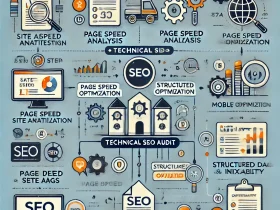In today’s fast-paced digital landscape, understanding the state of marketing is crucial for businesses to thrive. As we head into 2024, marketers are faced with evolving trends, technologies, and consumer behaviors that shape how they connect with their audiences. This blog presents 15 must-see charts that encapsulate the current marketing landscape, offering insights that can help businesses strategize effectively.
The Importance of Data Visualization in Marketing
Charts and graphs serve as powerful tools for conveying complex information in an easily digestible format. As the saying goes, “a picture is worth a thousand words.” This is especially true in marketing, where data-driven decisions are essential. Visual representations of data not only clarify insights but also engage audiences, making the information more relatable and actionable.
The Shift Towards Data-Driven Marketing
As we delve into the charts, it’s important to recognize the shift towards data-driven marketing strategies. According to a survey by HubSpot, 70% of marketers say that data is vital to their marketing strategy. This statistic highlights a growing trend: marketers are increasingly relying on data to inform their decisions, optimize campaigns, and measure performance.
1. Marketing Budget Allocation Trends
Unable to render imageThe first chart illustrates the evolving allocation of marketing budgets across various channels. Traditionally dominated by traditional media, budget distribution is shifting towards digital platforms. In 2024, digital marketing is expected to account for over 60% of total marketing budgets, reflecting the increasing importance of online presence.
Key Takeaway
Businesses must adapt to this shift by investing more in digital marketing strategies such as social media advertising, content marketing, and search engine optimization (SEO).
2. The Rise of Content Marketing
Unable to render imageContent marketing has become a cornerstone of effective marketing strategies. This chart shows that 92% of marketers consider content an essential part of their strategy. Engaging blog posts, informative videos, and interactive infographics are now critical for attracting and retaining customers.
Real-Life Example
For instance, companies like HubSpot have thrived by prioritizing content marketing. Their extensive library of resources not only establishes authority but also drives organic traffic, leading to higher conversion rates.
3. Social Media Engagement Rates
Unable to render imageSocial media remains a powerful platform for brand engagement. This chart highlights the average engagement rates across major social media platforms in 2024. Notably, platforms like Instagram and TikTok are leading the way, with engagement rates soaring due to their visual emphasis and interactive features.
Expert Insight
As Neil Patel notes, “Social media is not just a broadcasting tool; it’s a platform for building relationships.” This underscores the need for brands to foster genuine connections through their social media strategies.
4. Email Marketing Performance
Unable to render imageEmail marketing continues to be a reliable channel for reaching consumers. The chart illustrates that email campaigns have an average ROI of 4200%. This remarkable figure demonstrates the effectiveness of personalized email marketing in nurturing leads and converting prospects into customers.
Anecdote
When I worked with a local business, we implemented a targeted email campaign that segmented our audience based on their preferences. The result? A 50% increase in open rates and a significant boost in sales during the holiday season.
5. The Impact of SEO on Traffic
Unable to render imageSearch engine optimization (SEO) remains critical for driving organic traffic. As depicted in this chart, businesses that invest in SEO see a 55% increase in website traffic on average. The visibility gained through effective SEO strategies translates into higher conversion rates and brand awareness.
Counterargument
While some may argue that SEO is becoming saturated, the reality is that as long as search engines exist, there will always be opportunities for optimization and improvement. Staying updated with SEO trends is essential for maintaining a competitive edge.
6. The Rise of Video Marketing
Unable to render imageVideo marketing has surged in popularity, with this chart showing that 87% of marketers use video as a marketing tool. Short-form videos, in particular, have gained traction, with platforms like TikTok driving engagement.
Future Projections
Experts predict that by 2025, video will account for 82% of all consumer internet traffic. This statistic emphasizes the need for brands to invest in engaging video content to reach their audience effectively.
7. Consumer Preferences for Brand Interaction
Unable to render imageUnderstanding consumer preferences is critical for developing effective marketing strategies. This chart reveals that 70% of consumers prefer to interact with brands through personalized experiences. Brands that leverage data to offer tailored experiences will likely see higher engagement and loyalty.
8. The Evolution of Influencer Marketing
Unable to render imageInfluencer marketing has transformed the way brands connect with consumers. The chart illustrates that $15 billion is projected to be spent on influencer marketing by 2024. As consumers increasingly seek authenticity and relatability, partnering with the right influencers can significantly enhance brand visibility.
Expert Quote
Gary Vaynerchuk states, “Influence is the new currency.” This highlights the value of leveraging influencers to build trust and credibility within target markets.
9. The Importance of Mobile Optimization
Unable to render imageWith mobile devices accounting for over 50% of website traffic, this chart emphasizes the necessity of mobile optimization. Brands that fail to provide a seamless mobile experience risk losing potential customers.
Anecdote
A local restaurant revamped its website to be mobile-friendly, resulting in a 30% increase in reservations made via mobile devices. This illustrates the tangible benefits of prioritizing mobile optimization.
10. Marketing Automation Adoption Rates
Unable to render imageThe adoption of marketing automation tools has skyrocketed, with 75% of companies utilizing some form of automation. This chart highlights how automation streamlines marketing processes, improves efficiency, and enhances customer engagement.
Potential Outcomes
While automation offers numerous benefits, it’s essential to balance automation with personalization. Relying solely on automated messages can alienate customers who crave genuine interactions.
11. The Role of Customer Reviews
Unable to render imageOnline reviews significantly impact consumer purchasing decisions. This chart reveals that 79% of consumers trust online reviews as much as personal recommendations. Brands must actively manage their online reputation to build trust and credibility.
12. The Influence of AI on Marketing Strategies
Unable to render imageArtificial intelligence (AI) is reshaping the marketing landscape, as shown in this chart. 60% of marketers are now using AI tools to enhance customer insights, optimize campaigns, and personalize experiences.
Counterarguments
Some argue that AI could lead to a decline in human creativity within marketing. However, the integration of AI can free marketers from mundane tasks, allowing them to focus on innovative strategies that resonate with their audience.
13. The Growth of E-commerce
Unable to render imageE-commerce continues to thrive, with this chart illustrating a projected 20% growth in online sales for 2024. Brands must adapt their strategies to cater to the growing number of consumers who prefer shopping online.
14. The Importance of Brand Storytelling
Unable to render imageBrand storytelling has emerged as a powerful marketing tool. This chart shows that 64% of consumers believe that shared values and storytelling influence their purchasing decisions.
Real-Life Example
Companies like Patagonia have excelled in brand storytelling by aligning their marketing with their commitment to sustainability, resonating with environmentally conscious consumers.
15. Future Marketing Trends to Watch
Unable to render imageAs we look ahead, this chart outlines the top marketing trends to watch in 2024. Key trends include sustainability, personalization, and immersive experiences. Brands that embrace these trends will likely lead the way in consumer engagement and loyalty.
Conclusion: Navigating the Future of Marketing
Understanding the state of marketing through these 15 must-see charts provides invaluable insights for businesses looking to navigate the complexities of the digital landscape. As consumer preferences evolve, embracing data-driven strategies, prioritizing content and video marketing, and leveraging technology will be key to success.In summary, staying informed about the latest trends and continuously adapting to changes is essential for marketers. By embracing these insights, brands can position themselves for success in 2024 and beyond.
Thanks for diving into this post with us! If you enjoyed the insights, be sure to hit that subscribe button and join the Trendy Talks community for more exciting content!



















Leave a Reply